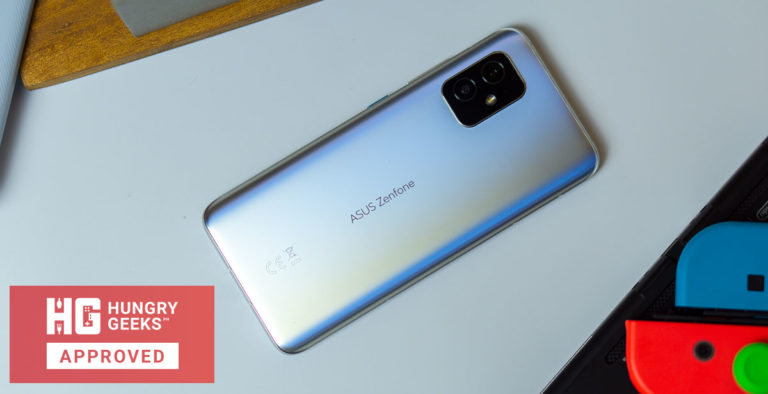
The ASUS ZenFone 8 occupies a somewhat deserted part of the smartphone market: the compact flagship. Other brands have moved towards a larger form factor but some users still want a small and light smartphone to carry around all day. Despite its smaller footprint, ASUS has still packed all the goodies you expect from a flagship smartphone.
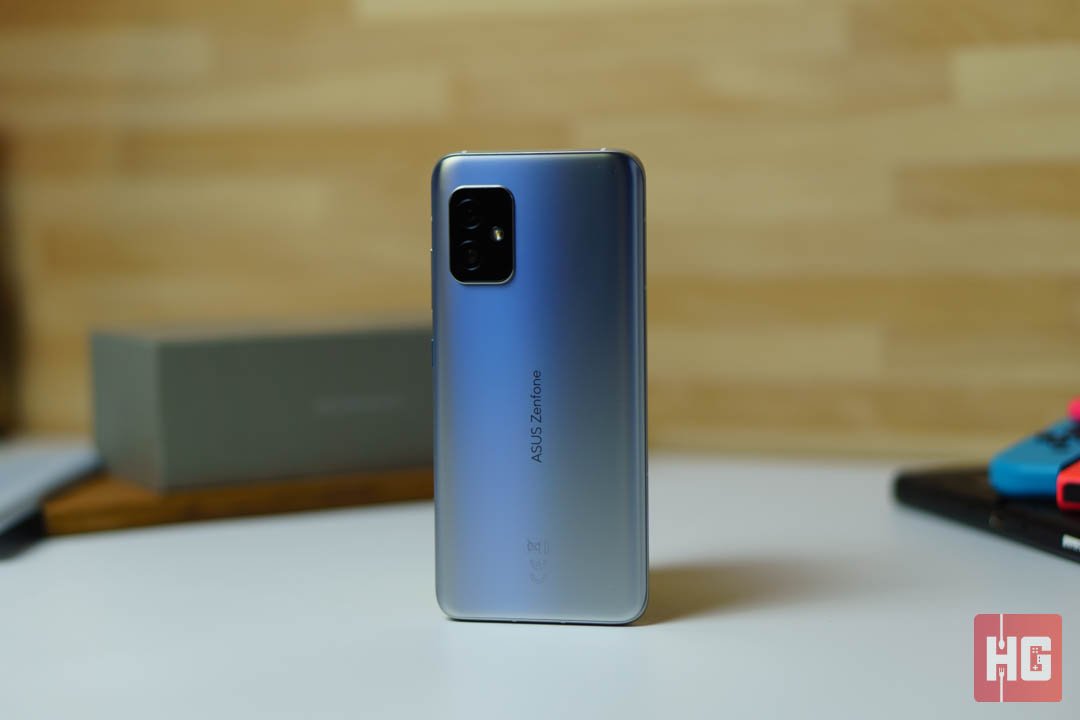
| Chipset | Qualcomm Snapdragon 888 |
| Screen | 5.9-inch Samsung AMOLED, 2400 x 1080, 120Hz, 1100nits, 112% DCI-P3, Gorilla Glass Victus |
| RAM | 8GB, 16GB LPDDR5 |
| OS | Android 11, ZenUI 8 |
| Rear Camera | 64MP f/1.8 IMX686 Main, OIS, PDAF; 12MP f/2.2 Ultrawide IMX363, Dual PD Autofocus, 4cm Macro Shot |
| Front Camera | 12MP f/1.8 IMX663 |
| Storage | 128GB, 256GB UFS 3.1; 64GB UFS 2.1 |
| Network | Dual-SIM, 5G |
| Connectivity | Dual-Band WiFi 802.11ax, 2×2 MIMO, Bluetooth 5.2, aptX Adaptive, WiFi Direct, NFC, USB Type-C |
| Battery | 4,000mAh, QuickCharge 4.0 and PD Charging |
| Others | In-Display Fingerprint Scanner, Dual-Speakers, DIRAC Audio |
| Colors | Obsidian Black, Horizon Silver |

The ASUS ZenFone 8 comes in a gray box with the number 8 embossed at the front. Encased inside is the smartphone itself along with a complementary set of accessories that include a 30W wall charger, USB Type-C to Type-C cable, a hardcase, and documentation.

One of the highlights of the ZenFone 8 is its 5.9-inch 2400 x 1080 Samsung E4 AMOLED screen protected by Gorilla Glass Victus running at 120Hz refresh rate, a peak brightness of 1100nits, and 112% DCI-P3 coverage.
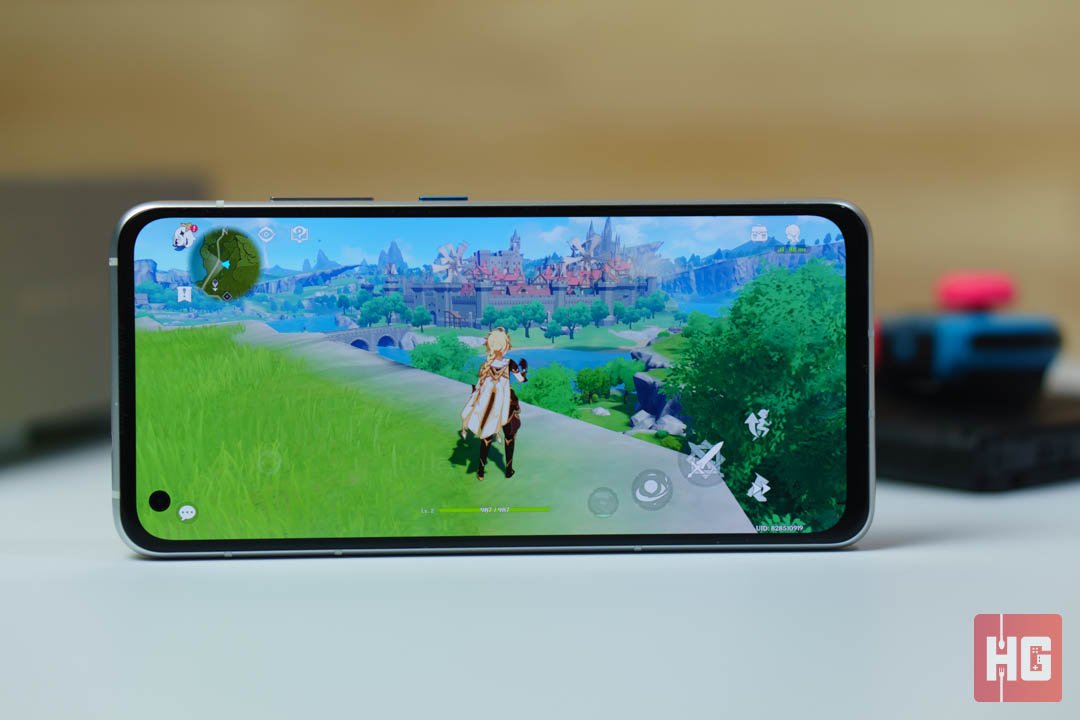
Everything on the display looks crisp due to the combination of high resolution and smaller screen. Color are punchy and well-saturated while blacks are deep thanks to the AMOLED panel. Animation feels fluid due to the high refresh rate screen and you can even adjust the animation speed easily via the settings menu instead of the developer options menu.
It is worth noting though that you can manually switch refresh rate on the fly but switching to the high performance will lock the screen to 120Hz. The display’s refresh rate cannot be turned down while in this mode and you need to step down performance to Dynamic to do so.
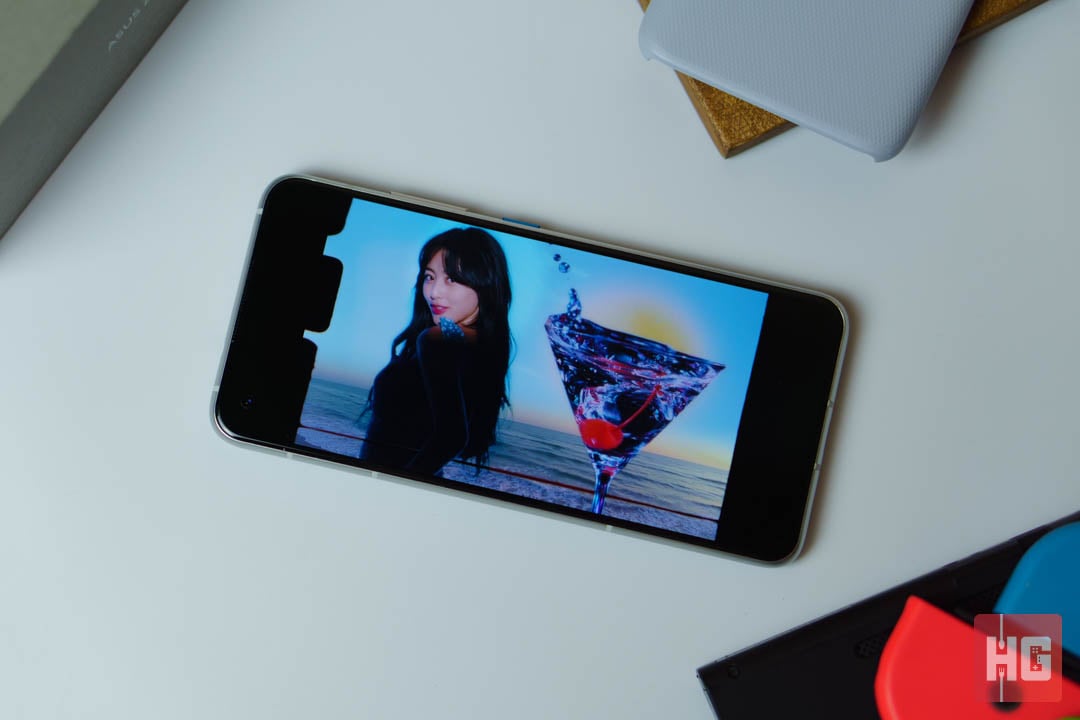
Audio has been once more co-engineered with DIRAC with its Dual Speakers powered by a Cirrus Logic CS35L45 Mono amp. The speakers do have quite the volume but the bottom speakers are significantly louder than the earpiece speaker. Bass is punchy but isn’t too overpowering and is still able to deliver treble and highs on tracks.
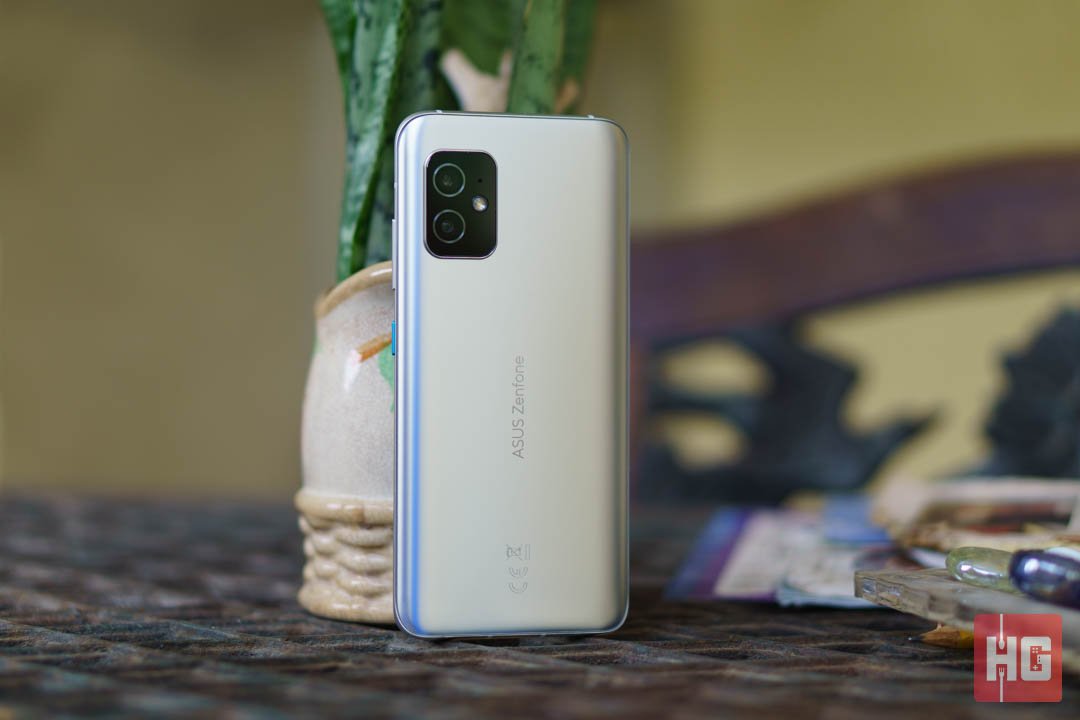
The ASUS ZenFone 8 sports a sleek, no-nonsense chassis made out of aluminum. It feels good in the hand with a matte, smooth finish and a solid feel.
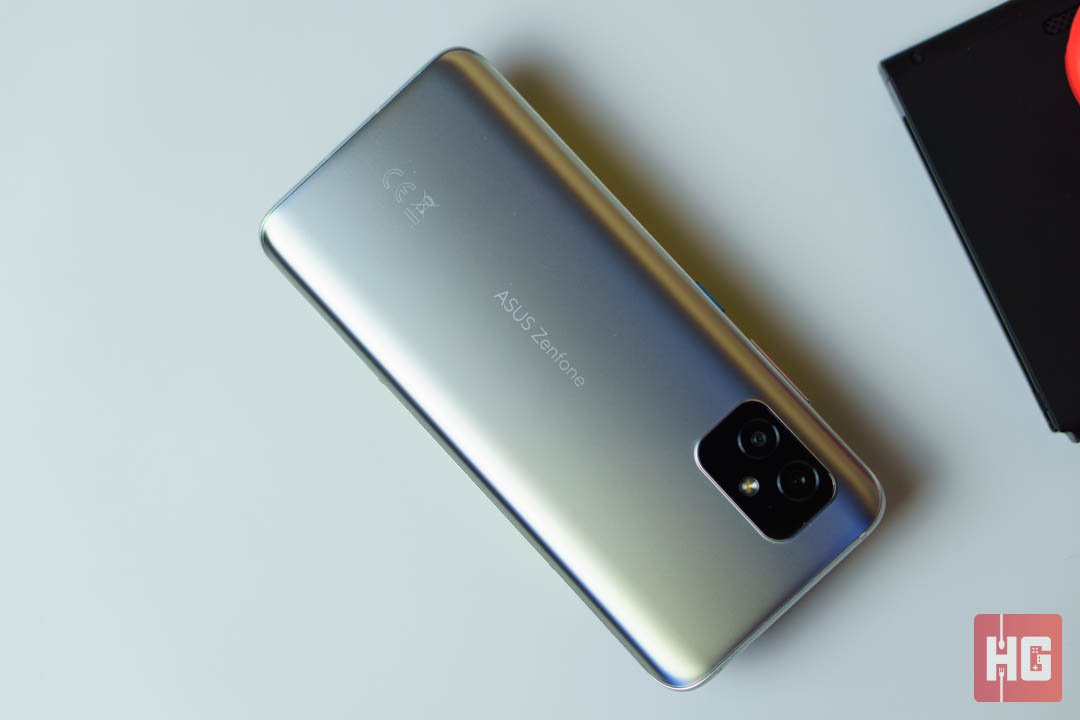
The sides are completely curved and adds comfort while gripping the device. The one we got for review is its Horizon Silver variant and is resistant to fingerprints thanks to its new frosted-glass rear.
ASUS is positioning the 3.5mm audio jack at the top. The bottom houses a USB Type-C port, a SIM card tray for SIM cards, and the grille for its bottom-firing speakers. We would have like if the audio jack was squeezed to the bottom to make for a cleaner aesthetic but given that there’s already a lot going on, we understand ASUS’ decision to put it at the top.

At the right-hand side are the volume rocker and power button. The latter also acts as a customizable Smart Key, which can be configured to launch an application, turn specific settings on or off, switch between sound modes, or take screenshots.
The ZenFone 8 runs on Android 11 with the revamped ZenUI. ASUS keeps the rational approach and does not change anything major on the UI. Pretty much everything that’s standard on the Android platform is here such as Dark Mode, One-Handed Mode, Gesture Navigation, and Multi-Window Support, as well as a few customization options for the icons and their shapes.
The ZenUI also allows for a bit of audio trickery via Audio Wizard. You can adjust individual volumes for the smartphone, switch EQ presets, or if you want to finetune your listening experience, create your own EQ profile.

Of course, GameGenie is also available in the ZenFone 8. It delivers the same experience as the version found on the ROG Phone 5 allowing for notification and call block, quick settings adjustments for brightness and refresh rate, terminate background apps, and monitor GPU and CPU usage and temperature.
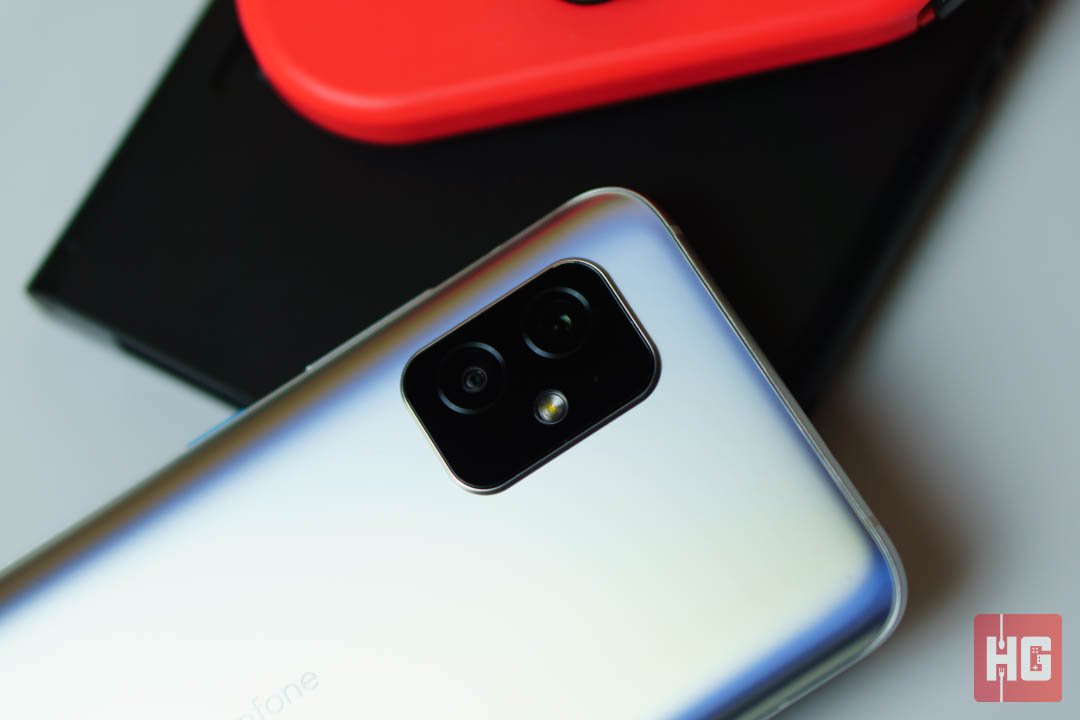
The ZenFone 8 steps back from the quad camera fad that other smartphones have fallen into and kept its camera system fairly simple. You have access to two lenses at the back: a 64MP f/1.8 main lens powered by a Sony IMX 686 sensor and a 12MP f/2.2 utrawide camera that doubles as a macro lens backed by a Sony IMX 363 sensor.
Its camera app includes all the staples but since the cameras have now been upgraded, they can now take 8K60fps video and 4K60fps video on the main and ultrawide lenses, respectively. The smartphone also has access to 4K Slow motion (120fps), 720p480fps, more time lapse settings, Free Zoom, Directional Audio Recording, and Dynamic Night Mode.
ASUS has done an amazing job on the 64MP f/1.8 main shooter of the ZenFone 8. All photos taken are saved at 16MP and the detail preserved by these are top-notch. Dynamic range is good and the white balance are pretty accurate for the condition. Colors are decent and fairly accurate on most photos taken. Low-light performance on the main lens is also pretty good with good detail, low noise, and similarly adequate colors.
Performance of the 12MP f/2.2 Sony IMX 363-powered ultrawide sensor is equally impressive. Everything looks natural and photos have just the right amount of detail and sharpening. There’s no fringing at the edges nor any kind of distortion thanks to proper correction on the lens. Night performance is a bit behind the main lens, however, which might prompt the use of Night Mode at times.

At the front of the smartphone is 12MP f/2.45 selfie camera with a Sony IMX 663 sensor. It does sport PDAF and the capability to take 4K30fps videos. Photos can be taken automatically since the smartphone does not apply any beautification by default. All pictures look natural and sharp, while colors look punchy without being aggressive or over-saturated.
Despite its small chassis, the ZenFone 8 packs in the powerful Qualcomm Snapdragon 888 5G chip with up to 16GB LPDDR5 RAM and up to 256GB UFS 3.1 storage. All work together to deliver a lag-free experience without any major hiccups in any kind of usage scenario.
Running benchmarks are pretty much a breeze on the device. It’s just shy from the 800K mark in AnTuTu and it scores a remarkable 16369 in PCMark Work 2.0. Benchmarks are quite easy for the ZenFone 8 but it will dump a significant amount of heat onto the chassis.
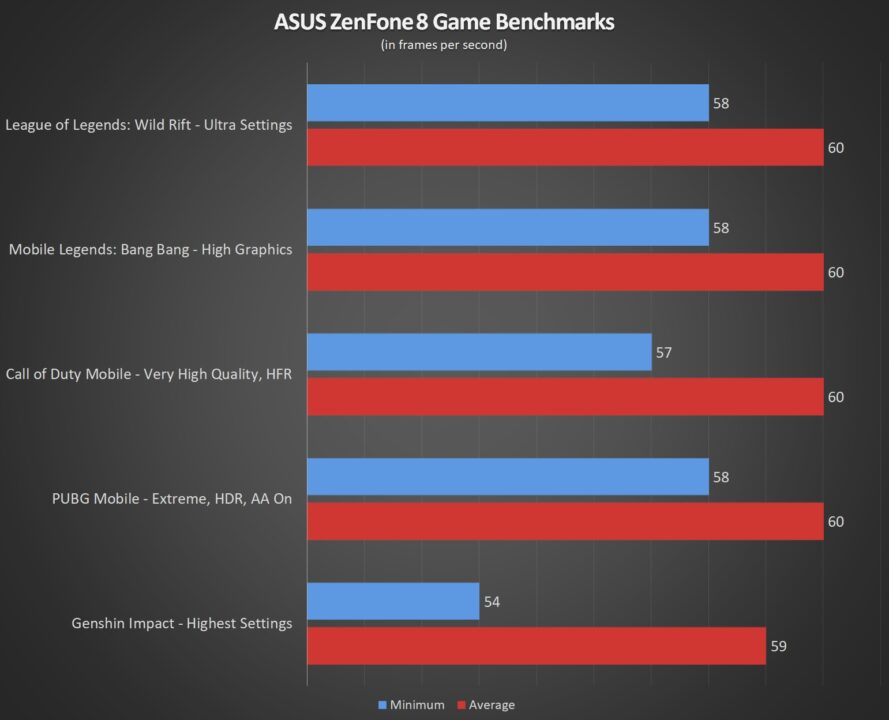
Games will run incredibly smoothly on the ZenFone 8. Mainstream games like PUBG Mobile and Call of Duty Mobile as well as MOBAs available in the Play Store will run at a steady 60fps. More graphically intensive games like Genshin Impact will also run at a stable 60fps even with all the settings turned up. It’s a shame, however, that not every mainstream game available support 120fps on the device.
ASUS is only able to fit in a 4,000mAh battery inside due to the smartphone’s due to its thin and small profile. This makes the battery one of the weaker aspects of the device. Under normal use, however, the smartphone will be able to get through the day with only a bit battery left at the end. Lowering the refresh rate will significantly increase the battery life. This shows on PCMark 2.0 battery test with the smartphone only reaching around 7 hours of usage at 120Hz and just above 13 hours in the regular 60Hz.
Charging pales in comparison compared to the competition. ASUS is only employing a 30W charging connection for the ZenFone 8 and it also lacks any kind of wireless charging capability. Despite that, the battery can be charged in around 1 hour and 20 minutes from zero to full.
Those who want to lengthen the battery longevity can also turn on steady or ultra-steady charging to lower the temperature of the battery while charging, which may lead to a longer battery lifespan.

While other smartphone brands have moved to larger form factors for the smartphones, ASUS has completely made a full turn around and made a small and sleek flagship device for those who like a compact experience.

The brand is also able to fit quite a lot of flagship features for such a diminutive device like a 5.9-inch 120Hz AMOLED display, pumping speakers, fast performance, and a brilliant set of cameras. There are a few downsides, however, like the trailing battery life and some might not like its size.

For the most part, ASUS has done a great job with the ZenFone 8. At PhP 34,995 (8GB/128GB) or PhP 39,995 (16GB/256GB) the smartphone targets a very specific demographic: users who like a relatively small smartphone that packs a terrific punch. If this is the form factor that you have been looking for, then the ASUS ZenFone 8 is definitely a solid contender.
